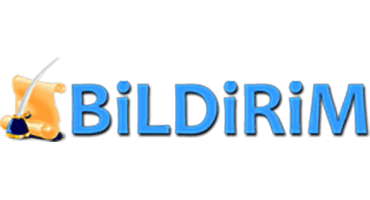Oral Presentation - 18
THE SURGICAL TREATMENT OF ANAL FISTULA IN CHILDREN
Fatih Çelik, Ayşe Parlak, Hatice Melda Ürekli, İrfan Kırıştıoğlu, Hasan Doğruyol
Uludag University, Faculty of Medicine, Department of Pediatric Surgery, BURSA
THE SURGICAL TREATMENT OF ANAL FISTULA IN CHILDREN
AIM; We present the results of our patients treated with anal fistula between the years of 1988 and 2017 in our clinic.
MATERIALS - METHODS: Fifty patients who were operated between 1988 and 2017 were retrospectively evaluated up to their age, sex, complaints of admission, presence of fistula, comorbid disease, preoperative examination findings , surgical technique, discharge and follow - up period and the presence of complication.
RESULTS; The mean age of our patients was 6.4 years (1.5 months to 17 years) and the ratio of female to male was 3/47.
The complaints of our patients were perianal swelling and redness and perianal purine discharge. Pelvic MRI was performed as preoperative evaluation for 6 patients.
Four of the fistulas were suprasphincteric and transsphincteric, while the rest of the fistulas were placed distally.
In 3 of our patients , more than one fistula tract were present . Ulcerative colitis in 1 patient, severe immunodeficiency in 4 patients and AML in 1 patient was seen as comorbid diseases. As operation technique, “Seton” was applied to 15 patients, “Fistulotomy” for 31 patients and both techniques were applied for 4 patients. The mean discharge time was 2.3 days (1 - 5 days) and the mean follow - up period was 4.4 months (1 - 14 months). Our complication rate was 4.2%. As complications ; a recurrent fistula in two patients with more than one fistula,and complicated fistula and a fistulotomy operation in 1 patient followed by a complicated pilonidal sinus associated new fistula development.
CONCLUSION; Fistulotomy is a safe and effective treatment method in children. Unlike seton application, it is possible to have good results on first attempt.
ÇOCUKLARDA ANAL FİSTÜLLERİN CERRAHİ YÖNETİMİ
Fatih Çelik, Ayşe Parlak, Hatice Melda Ürekli, İrfan Kırıştıoğlu, Hasan Doğruyol
Uludağ Üniversitesi Tıp Fakültesi Çocuk Cerrahisi Anabilim Dalı, BURSA
Amaç: Çalışmamızın amacı kliniğimizde 1988 – 2017 yılları arasında anal fistül tanısı ile tedavi edilmiş olan hastalarımızın sonuçlarını sunmaktır
Materyal – Metod: 1988 – 2017 yılları arasında opere edilmiş olan 50 hasta; yaş, cinsiyet, başvuru şikayeti, fistül yerleşimi, yandaş hastalık olup olmadığı, preoperatif tetkik varlığı, uygulanan cerrahi teknik, taburculuk ve takip süreleri ile komplikasyon varlığı açısından retrospektif olarak değerlendirildi.
Bulgular: Hastalarımızın ortalama yaşı 6.4 yaş idi (1.5ay – 17 yaş), Kız/Erkek oranı: 3/47 idi. Hastalarımızın başvuru şikayetleri perianal şişlik ve kızarıklık ile perianal pürülan akıntı olmuştur. Preoperatif tetkik olarak 6 hastamıza pelvik MR yapıldığı görülmektedir. Fistüllerin 4 tanesi suprasfinkterik ve transsfinkterik yerleşimli iken geri kalanları distal yerleşimli idi. 3 hastamızda birden fazla fistül traktı mevcut idi. Eşlik eden hastalık olarak 1 hastamızda ülseratif kolit, 4 hastamızda ağır immün yetmezlik, 1 hastamızda AML saptandı. Uygulanan teknik olarak bakıldığında seton uygulaması 15 hastaya, fistülotomi uygulaması 31 hastaya ve her iki teknik birlikte 4 hastaya uygulanmıştır. Hastalarımızın taburculuk süreleri ortalama 2.3 gün (1 – 5 gün) ve takip süreleri ortalama 4.4 ay idi (1 – 14 ay). Komplikasyon oranımız %4.2 idi. Komplikasyon olarak komplike ve birden fazla fistülü olan 2 hastada nüks fistül ve 1 hastada fistülotomi operasyonunu takiben komplike pilonidal sinüs ile ilişkili yeni bir fistül gelişimi saptanmıştır.
Sonuç: Fistülotomi uygulaması çocuklarda oldukça etkin ve güvenli bir tedavi yöntemidir. Seton uygulamasının aksine tek bir girişim ile yüz güldürücü sonuçlar almak mümkündür.

